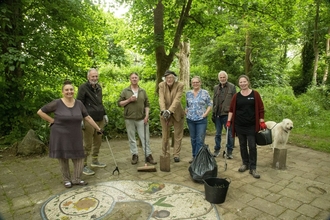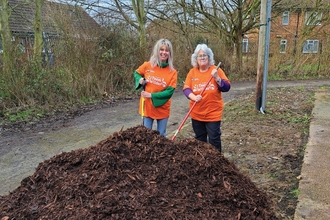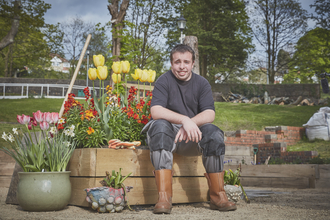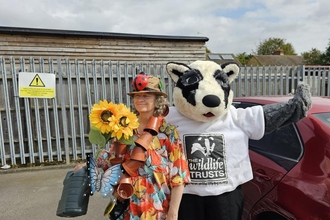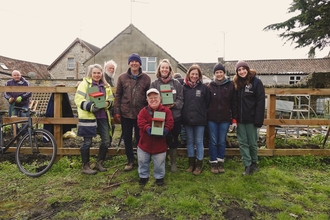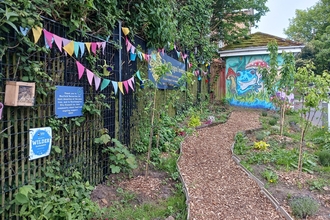Building a butterfly and moth garden in a disused quarry
Image Copyright / Mountsorrel and Rothley Community Heritage Centre
Going wild is so important; biodiversity is so important. We must look after our wild areas and where we can, improve them.
A small, dedicated team of volunteers have come together to build a butterfly and moth garden at the Mountsorrel and Rothley Community Heritage Centre.
For years, the centre has been a haven for wildlife. It started off as an abandoned old railway line that ran into the village of Mountsorrel in Leicestershire. The railway line has since been restored and over the years, the surrounding area has also been brought back to life, including a small woodland, a spinney, and a disused quarry. The quarry floor now holds gardens with native pollinator borders and wild soil banks.
The volunteer group wanted to take things a step further by growing a butterfly and moth garden, or ‘Cafe’ as they call it. They started by carefully removing a small area of bramble before getting to work on building a meadow of wildflowers to attract butterflies, moths, bees and other insects.
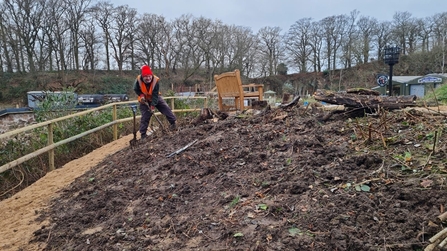
Photo copyright / Mountsorrel and Rothley Community Heritage Centr
The existing ground consisted of heavy clay. Wildflowers need a lighter soil to thrive so the group hauled a couple of tonnes of topsoil to cover the ground before planting. They also built a path running through the garden so that visitors can see the butterflies and moths at close quarters.
“We've always tried to be on the education side,” Jean said. “We've got lots of information boards around the place to educate people and particularly children so that they can get close to nature and get close to the butterflies and the bees.”
There are now over 200 plant species in the garden which is attracting a host of different insects.
Jean is the ecology team leader at the Community Heritage Centre. A volunteer for 11 years, she leads a team of 16 other volunteers who maintain and improve the biodiversity across the site.
Jean said one of the biggest challenges has been covering such a large area with a small team of volunteers.
But what the team lacks in numbers it more than makes up for in dedication. Despite record-breaking wet weather over the winter months, the group were able to create a beautiful 40 square-metre garden complete with paths and educational signs.
As a self-funded organisation, finances can also be a challenge. The Centre has a cafe which has been the primary funder for its work, but with maintenance costs increasing over the last year, it now charges an entrance fee. Determined to keep the site accessible, the entry cost is kept as low as possible: £2 for adults and £1 for children.
Jean and her team are always looking for ways to improve biodiversity across the site and educate local people about the importance and value of nature.
“Education is a big thing for us, especially now,” Jean said “We need to get it out there that that going wild is so important; biodiversity is so important. We must look after our wild areas and where we can, improve them.”

Katrina Martin/2020VISION
Have you been part of a community garden?
If you want to tell us your story, we'd love to hear from you and share your experience on the Community Hub.




